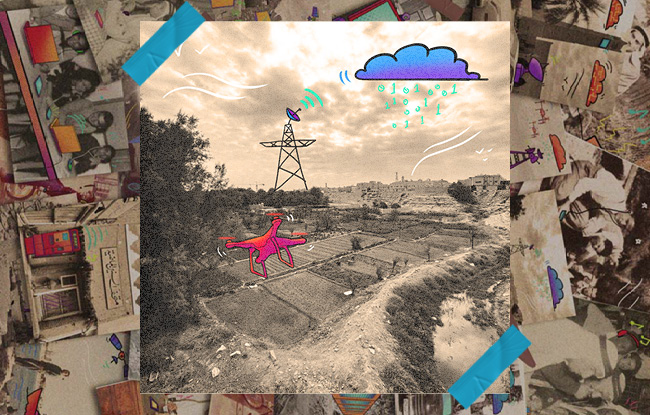- Arbitration
- Banking & Finance
- Capital Markets
- Commercial
- Competition
- Construction & Infrastructure
- Corporate / Mergers & Acquisitions
- Corporate Services
- Corporate Structuring
- Digital & Data
- Dispute Resolution
- Employment & Incentives
- Family Business & Private Wealth
- Innovation, Patents & Industrial Property (3IP)
- Insurance
Find a Lawyer
Book an appointment with us, or search the directory to find the right lawyer for you directly through the app.
Find out more
Level Up: Unlocking Financial Potential In The Middle East
Welcome to this edition of Law Update, where we focus on the ever-evolving landscape of financial services regulation across the region. As the financial markets in the region continue to grow and diversify, this issue provides timely insights into the key regulatory developments shaping banking, investment, insolvency, and emerging technologies.


2025 is set to be a game-changer for the MENA region, with legal and regulatory shifts from 2024 continuing to reshape its economic landscape. Saudi Arabia, the UAE, Egypt, Iraq, Qatar, and Bahrain are all implementing groundbreaking reforms in sustainable financing, investment laws, labor regulations, and dispute resolution. As the region positions itself for deeper global integration, businesses must adapt to a rapidly evolving legal environment.
Our Eyes on 2025 publication provides essential insights and practical guidance on the key legal updates shaping the year ahead—equipping you with the knowledge to stay ahead in this dynamic market.
The leading law firm in the Middle East & North Africa region.
A complete spectrum of legal services across jurisdictions in the Middle East & North Africa.
-
Practices
- All Practices
- Banking & Finance
- Capital Markets
- Commercial
- Competition
- Construction & Infrastructure
- Corporate / Mergers & Acquisitions
- Corporate Services
- Corporate Structuring
-
Sectors
-
Country Groups
-
Client Solutions
Today's news and tomorrow's trends from around the region.
17 offices across the Middle East & North Africa.
Our Services
 Back
Back
-
Practices
- All Practices
- Banking & Finance
- Capital Markets
- Commercial
- Competition
- Construction & Infrastructure
- Corporate / Mergers & Acquisitions
- Corporate Services
- Corporate Structuring
- Digital & Data
- Dispute Resolution
- Employment & Incentives
- Family Business & Private Wealth
- Innovation, Patents & Industrial Property (3IP)
- Insurance
- Intellectual Property
- Legislative Drafting
- Private Client Services
- Private Equity
- Private Notary
- Projects
- Real Estate
- Regulatory
- Tax
- Turnaround, Restructuring & Insolvency
- White Collar Crime & Investigations
-
Sectors
-
Country Groups
-
Client Solutions

- Law Firm
- /
- Insights
- /
- Law Update
- /
- Technology, media, telecoms: past, present, and future
- /
- Cybersquatting: How to Get Your Name Back
Cybersquatting: How to Get Your Name Back
Manel Ben Said - Senior Associate - Intellectual Property
Private: Stephen Jiew - Senior Associate - Intellectual Property

Cybersquatting is not a thing of the past and your domain name represents your front door in the Internet. What happens when your name gets stolen by fraudsters in foreign countries where you might still not have a commercial presence or have not yet secured the name. We will go through the available dispute resolution mechanisms to recover your domain at an international and regional level.
What are your options, when you come across another company or, most of the time an individual (cyber squatter), using a domain name either identical or similar to yours or, to your trademark?
For more than 20 years, the Uniform Domain Name Dispute Resolution Policy (‘UDRP’) has been successful in administrating more than 45.000 cases. The UDRP is limited to clear cases of bad-faith, abusive registration and use of domain names and has proven highly popular among trademark owners. This mechanism allows fast resolution of clear cybersquatting disputes and is a great alternative to litigating through the courts.
Anyone can initiate a UDRP complaint including a brand owner, its legal representative or anyone with a legitimate interest. The UDRP can be used for a number of generic top-level domains including “.com”, “.info”, and “.org”.
To prevail in a domain name dispute under the UDRP, the complainant must prove the following elements:
- the domain name registered by the Respondent is identical or confusingly similar to a trade mark or service mark in which the complainant has rights;
- the Respondent has no rights or legitimate interests in respect of the disputed domain name; or
- the domain name has been registered and is being used in bad faith.
Bad faith
The Policy lists four circumstances as evidence of bad faith:
(i) the domain was registered for the purpose of selling it to the complainant or a competitor;
(ii) the domain was registered in order to prevent the brand owner from using it,
(iii) the domain was registered primarily to disrupt the business of a competitor; or
(iv) by using the domain, the registrant has intentionally attempted to attract users for commercial gain by creating a likelihood of confusion as to source or affiliation.
Remedies
The only remedies available under the UDRP are cancellation of the infringing domain name or transfer of its registration to the trademark owner.
Upon the conclusion of the proceeding, the Panel has three days to inform the registrar of its decision, which the Registrar is bound to implement pursuant to both the ICANN Registration Accreditation Agreement and the UDRP. Before implementing the decision however, the registrar is required to wait ten business days in order to give the adversely affected registrant the opportunity to file a complaint in a court of Mutual Jurisdiction. If such action is brought by a domain name holder, the registrar may not transfer or cancel the name until the conclusion of that lawsuit. In order to block the registrar’s transfer or cancellation of the domain name while the challenge is pending, the domain name holder must provide official documentation (e.g. a copy of the complaint, file-stamped by the court clerk) to the registrar within the ten-day window.
Timeline –
The UDRP Administrative Procedure is usually completed within 60 days of the date WIPO receives the complaint.
Variations of UDRP
For some jurisdictions, for instance for domains in .ir (Iran Country code), there are relevant differences between the UDRP and the .IR Policy
Bad faith
– it is sufficient for the complainant to prove that registration or subsequent use of the domain name is in bad faith, whereas the UDRP requires the complainant to prove both.
Mutual Jurisdiction
– Any challenges that may be made by the Respondent to a decision by the Administrative Panel to transfer or cancel the domain name should be submitted to the jurisdiction of the courts of the Islamic Republic of Iran.
Language –
The language of the administrative proceeding shall be the language of the Registration Agreement, i.e., Persian or English. However, the WIPO Centre only administers cases filed in English and not in Persian.
Regional centre
The Arab Centre for Dispute Resolution or ACDR is an approved UDRP dispute resolution service provider (‘DRSP’). It focuses on the MEAC (Middle East and Adjoining Countries) region and ensures development, maintenance, management, and dissemination of international legal standards and developments for successful Domain Name Dispute Resolution.
The ACDR was approved as a Dispute Resolution Service provider by ICANN on May 18, 2013. It has been gaining popularity since then. It is a suitable forum for domain dispute that requires recognition of fame or notoriety of a regional trademark.
Because the UDRP exists against the backdrop of traditional trademark law, it is important to note that pursuing a claim under the UDRP does not prevent either party from pursuing traditional avenues of litigation or arbitration. However, it has been proven that UDRP dispute resolution services offer an expedited and cost effective, route to resolving an issue involving a domain name.
For further information, please contact Manel Ben Said.
Stay updated
To learn more about our services and get the latest legal insights from across the Middle East and North Africa region, click on the link below.


